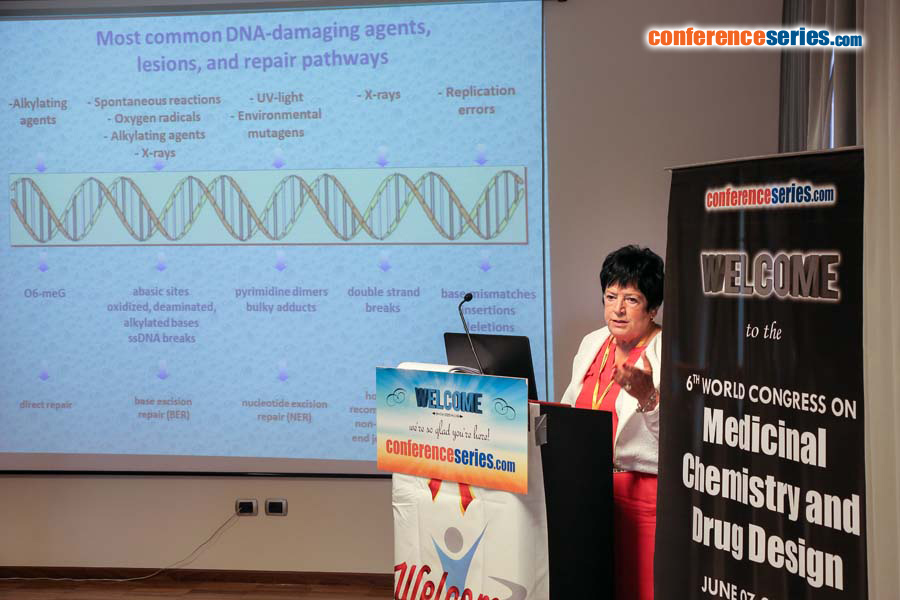
Olga I Lavrik
Institute of Chemical Biology and Fundamental Medicine, Russia
Title: Synthesis and biological evaluation of novel classes of tyrosyl-DNA phosphodiesterase 1 inhibitors as anticancer drugs
Biography
Biography: Olga I Lavrik
Abstract
Tyrosyl-DNA phosphodiesterase 1 (TDP1) is a promising target for antitumor therapy based on Top1 poison-mediated DNA damage. TDP1 plays an important role in removal stalled Top1-DNA covalent complexes, generated by DNA topoisomerase I (Top1) inhibitors, such as camptothecin and some other anticancer drugs. A mutation or genetic inactivation of Tdp1 can hypersensitise cells to camptothecin, whereas over-expression of the active Tdp1 protein has been shown to result in a significant reduction of camptothecin-induced DNA damages. Hence, inhibiting the activity of TDP1 can enhance the therapeutic effect of Top1 modulators for anticancer treatment. The row of novel types of compounds belonging to the different chemical classes were synthesized and tested as TDP1 inhibitors using an original oligonucleotide-based fluorescence assay. Some of them surpass world counterparts in efficiency in dozens of times. The study of cytotoxicity of these compounds revealed that all compounds possess moderate to low cytotoxicity. The absence of cytotoxicity is an advantage when used in combination with clinical Top1 inhibitors. Several inhibitors enhance cytotoxicity of camptothecin against tumor cell lines, sensitizing cells to its effects. We have chosen the least toxic inhibitors of Tdp1, possessing sensitizing effect, to test in vivo.We used mice with Lewis carcinoma to investigate the ability of Tdp1 inhibitors to sensitize tumor to the effect of topotecan (clinical camptothecin derivative). When using a combination of topotecan and Tdp1 inhibitor the primary tumor weight decreased by 30% and the number of lung metastases by 70% compared to a monotherapy with topotecan. Therefore, several new classes of very effective inhibitors of TDP1 were elaborated which are very prominent to improve cancer therapy based on TOP1 poison–mediated DNA damage.


